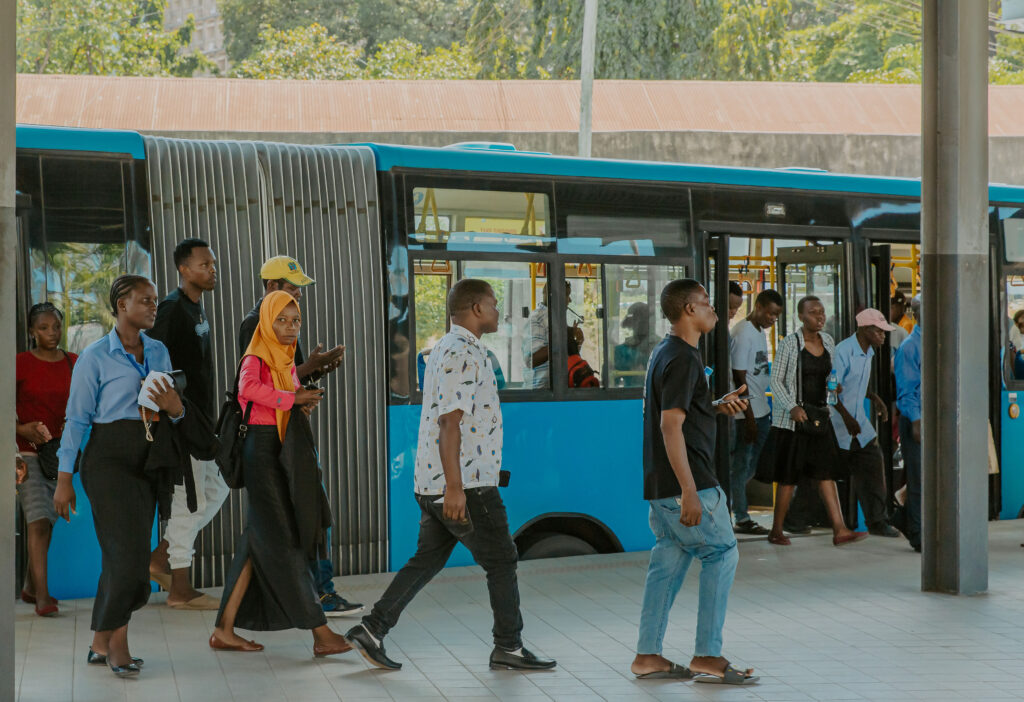HOME | WHAT IS BRT? | ABOUT THE BRT STANDARD | THE SCORECARD | BRT SCORES | DOWNLOAD
Bus rapid transit (BRT) is a high-capacity bus-based transit system that delivers fast, reliable, high quality, safe, and cost-effective services at relatively low cost, metro-level capacities. It achieves that through dedicated bus lanes that are median aligned, off-board fare collection, level boarding, bus priority at intersections, and fast and frequent operations.
Because BRT contains features similar to a light rail or metro system, it is much more reliable, convenient and faster than regular bus services. The three main delays facing public transport are 1) boarding and alighting, 2) intersections, and 3) traffic congestion. BRT solves for all three. With the right features, BRT is able to avoid the causes of delay that typically slow regular bus services, while also improving service quality, safety and security, and passenger experience.
BRT begins with the basics: the five essential features that put the rapid in BRT. These features most significantly result in a more reliable, accessible, and convenient trip for passengers and more efficiency for the operators.
The BRT Basics
There are five essential features that define BRT. These features most significantly result in a faster trip for passengers and make traveling on transit more reliable and more convenient.
- Dedicated Right-of-Way: Bus-only lanes make for faster travel and ensure that buses are never delayed due to mixed traffic congestion.
- Busway Alignment: Center of roadway or bus-only corridor keeps buses away from the busy curbside where cars are parking, standing, and turning
- Off-board Fare Collection: Fare payment at the station, instead of on the bus, eliminates the delay caused by passengers waiting to pay on board
- Intersection Treatments: Prohibiting turns for traffic across the bus lane reduces delays caused to buses by turning traffic. Prohibiting such turns is the most important measure for moving buses through intersections – more important even than signal priority.
- Platform-level Boarding: The station should be at level with the bus for quick and easy boarding. This also makes it fully accessible for wheelchairs, disabled passengers, strollers and carts with minimal delays.

While the BRT Basics are the foundational elements, four other components are key to ensuring that BRT is well designed for operations and passengers alike:
- Service Planning: BRT corridor design starts by defining the specific services that should operate inside any planned new BRT infrastructure, and that infrastructure should then be tailored to that service plan; it is an iterative process, but good public transport starts with service.
- Stations and Buses: BRT capacity and performance is determined primarily by BRT stations. BRT stations are also the most visible and visceral part of the system–the main way passengers experience the BRT system.
- Communications: If passengers do not know how to use the system, then no manner of good design will save it. Communicating with passengers about the system is vital for a BRT corridor to be effective.
- Access and Integration: A BRT corridor cannot be considered a standalone project. It exists within the many other systems of the city, and it must connect to them to increase access for all and ensure people can reach the BRT and then their destinations.
Finally, while design of the system is important to lock in its potential for meeting high quality service, how a BRT corridor operates and is maintained will affect ridership, confidence, and trust in the system and is critical to ensuring the BRT corridor retains and attracts ridership.
